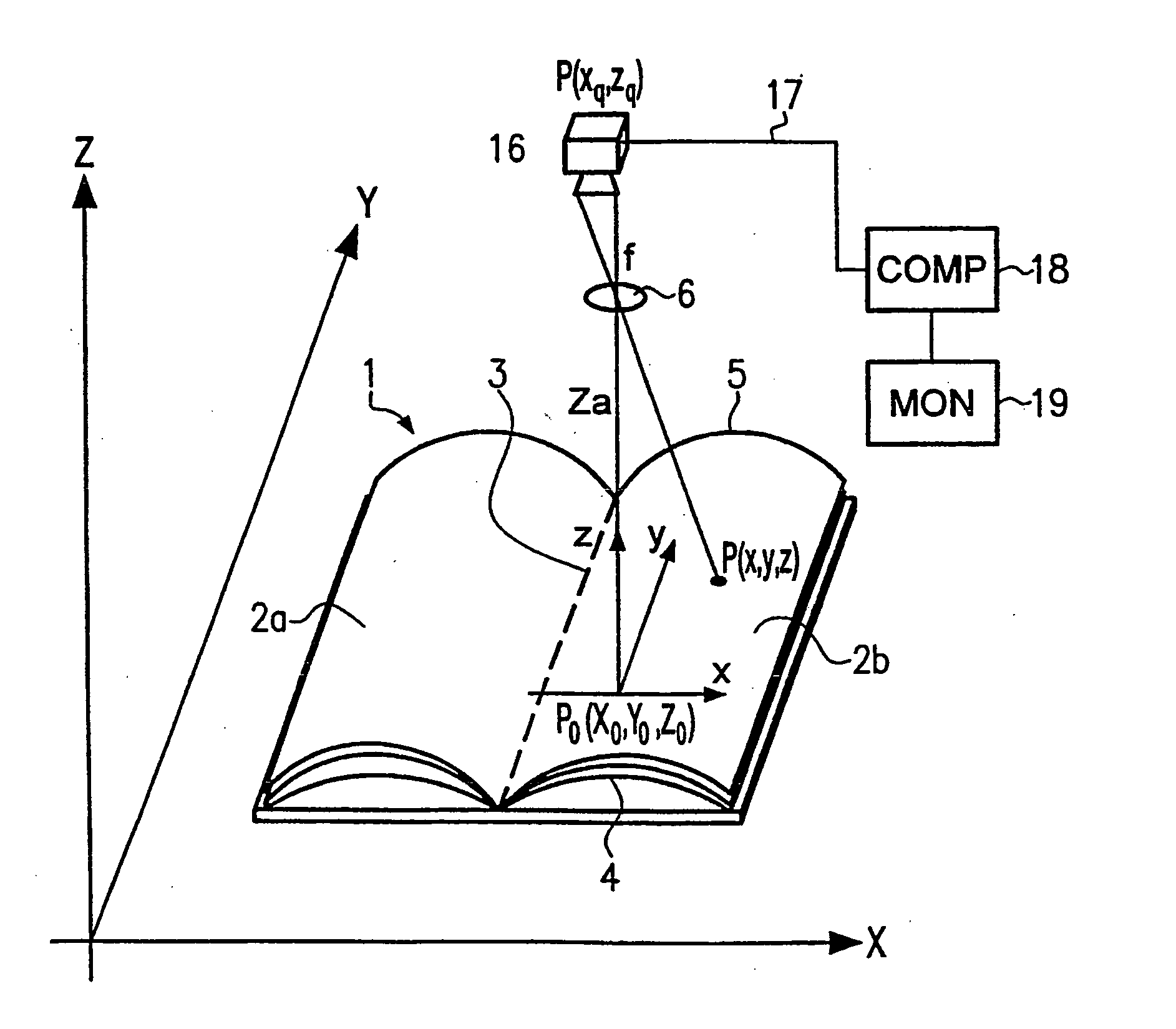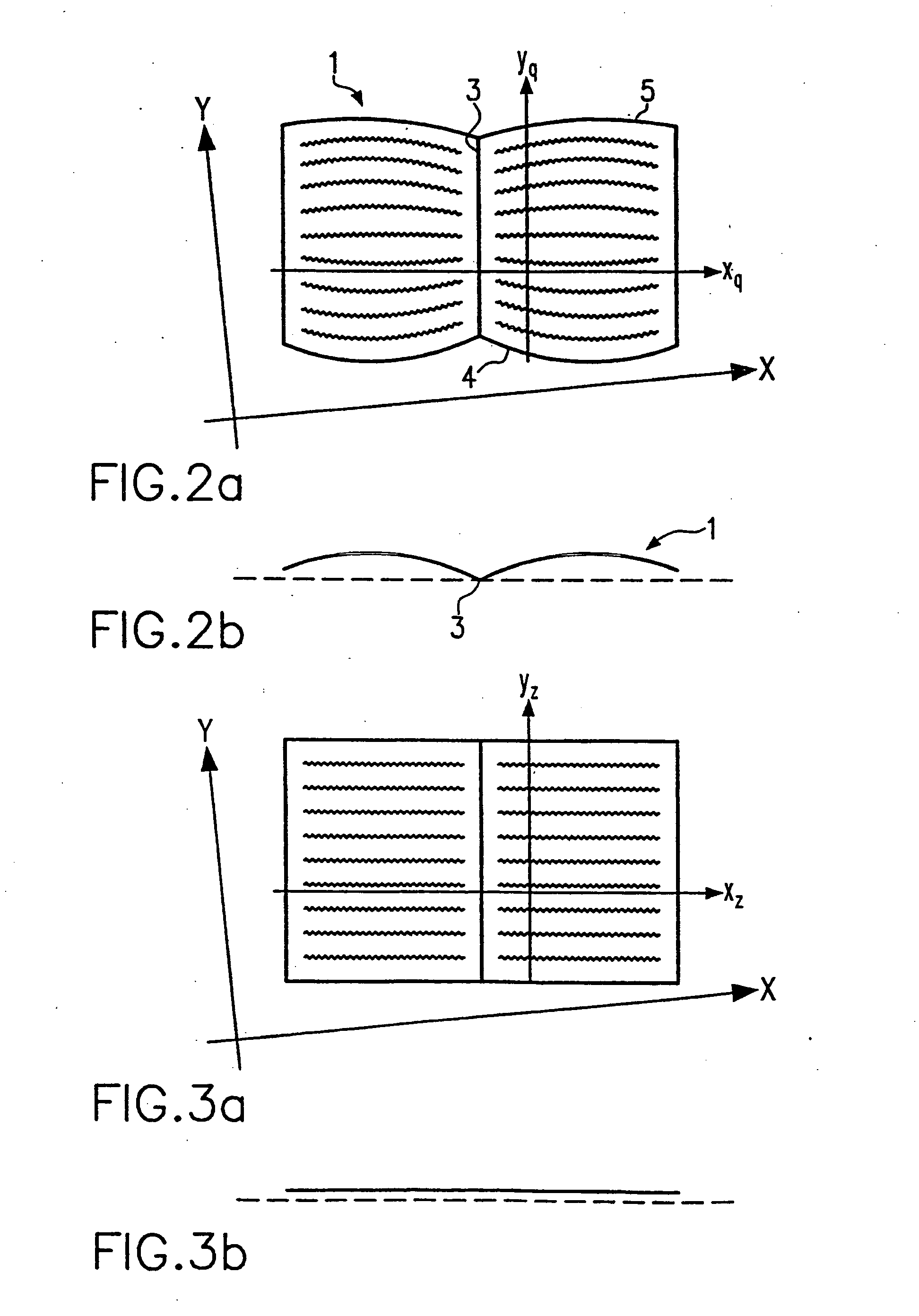Method and device for the correction of a scanned image
a scanned image and image correction technology, applied in image data processing, character and pattern recognition, instruments, etc., can solve the problems of significant problems in automatic methods of evaluating such images, distorted images, etc., and achieve the effect of reducing calculation effort, being executed very quickly and very precisely
- Summary
- Abstract
- Description
- Claims
- Application Information
AI Technical Summary
Benefits of technology
Problems solved by technology
Method used
Image
Examples
Embodiment Construction
In a particularly advantageous embodiment of the invention, the mapping to the Cartesian coordinate system and the mapping of the points of the source image to the points of the target image or, respectively, vice versa is executed with a single calculation operation. This produces two significant advantages, namely that on the one hand the method can be executed very quickly, and on the other hand rounding errors (which can never be prevented in individual calculation operations) are reduced to a minimum. The method is hereby very precise and at the same time very fast.
In the inventive method for automatic correction of a scanned image of a non-planar original with a cross-section contour constant along one axis, the original is scanned with an objective arranged stationary. The scanned image thereby represents a source image that is mapped to a corrected target image with the following steps: mapping of the source image onto a Cartesian coordinate system, whereby a line of the...
PUM
 Login to View More
Login to View More Abstract
Description
Claims
Application Information
 Login to View More
Login to View More - R&D
- Intellectual Property
- Life Sciences
- Materials
- Tech Scout
- Unparalleled Data Quality
- Higher Quality Content
- 60% Fewer Hallucinations
Browse by: Latest US Patents, China's latest patents, Technical Efficacy Thesaurus, Application Domain, Technology Topic, Popular Technical Reports.
© 2025 PatSnap. All rights reserved.Legal|Privacy policy|Modern Slavery Act Transparency Statement|Sitemap|About US| Contact US: help@patsnap.com



